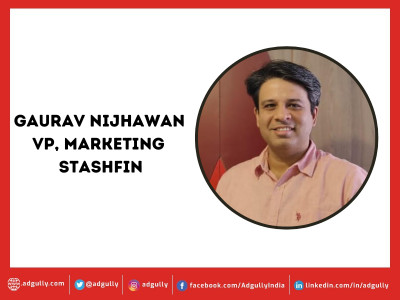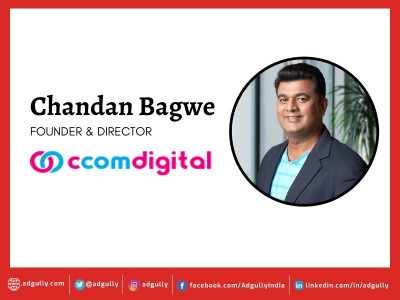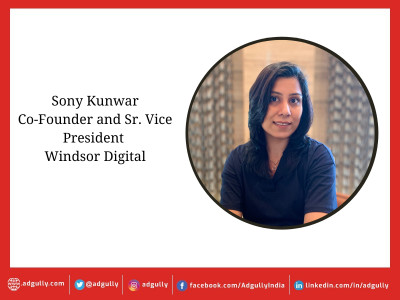In-app advertising will take the center-stage in 2019: Projjol Banerjea
Authored by Projjol Banerjea, Co-Founder & CPO, Zeotap
Last year, we saw a rising popularity in digital and video advertising which is due to continue its course for 2019. A new dimension is added this year as in-app advertising business is flourishing and is primed for growth.
A recent GroupM report found that among the various channels, digital continues to be the fastest growing medium registering 30% growth rate to reach Rs12,337 crore. It will command 18% of the overall advertising spends. Within digital, video advertising is estimated to grow at 54% with improved bandwidth, penetration of cheap data and affordable mobile devices. As we move into a video-driven world of consumption and advertising, app developers and publishers will need to keep in mind that a successful mobile app monetisation strategy is one that looks and feels like a seamless part of the app experience. While there may be different approaches to mobile app monetisation, we believe that there will be three trending strategies due to their revenue-earning potential.
The In-App Advertising Model
App Annie predicts that 60 per cent more apps will monetise through in-app advertising in 2019, as mobile is already the primary growth market for digital advertising. Most common and most lucrative, this model is available to mobile app developers and app publishers. Easy to set up and gain access to advertisements from the world’s top brands, this is a flexible and universal model. However, it has its drawbacks. The most known one is in-app viewability since measurement vendors have struggled in the past to integrate into publishers’ apps. There have been significant advances though to solve this problem such as the development of SDK Standards by the IAB.
The Freemium Model
This model leaves most of the app’s functionality entirely free to use and the app itself free to download. However, to unlock additional elements or features, in-app purchases are required from the target audience. In-app advertising can take advantage of this dual model in many ways. One of the most popular one is to show ads on the free version (as a user toll for having the app for free), and having an ad-free or limited-ad version once that user upgrades to a paid version. This way, apps can find the sweet spot between monetization models by utilizing both the free and the paid version.
A significant disadvantage here is that the app should have enough in the free version to entice end users to grab it from the app stores, but also be able to offer more so that someone is willing to pay. Moreover, to make significant revenue as a freemium app, the app needs to have sufficient reach plus sticky users to entice enough people towards the premium version (or added features).
The Paid Download Model
As the name suggests, people pay to download the app. The benefit here is that you earn money upfront for user access to the app, meaning lifetime value and user retention have less of an impact on the bottom line. Games, especially those from big-name publishers, will utilise the paid apps model, as will selected premium utility apps like high-end fitness trackers and business-centric apps. Of course, paid apps need to provide significant value to someone to compel them to spend money on it. A dollar is not much, but with so many free apps out there, it can be hard to get someone to fork over his or her money within the app stores. These reasons tend to make paid downloads a less popular option, which is why most of the world’s top apps are free to download. In-app advertising can take many forms in this particular model, and again app owners will have to find the right balance to maximize their revenues juggling both, the user download upfront fees, and advertising fees.
Conclusion
The tremendous shift towards mobile-first usage has had lasting impact on the advertising landscape. Mobile traffic dominated over desktop in 2018. As the tools in the industry are getting better, and production is becoming cheaper, app publishers will now have plenty of opportunities to maximise their revenue potential. The year 2019 may be the year of in-app advertising. So why not make the most of it?
Projjol is an experienced product and technology executive, serial entrepreneur, keynote speaker and panel moderator. At zeotap, Projjol is responsible for the company’s global cross-operator platform through which telecom operators’ data is made safely available to the advertising ecosystem. The platform initiates a new era of mobile targeting and was built entirely based on the principles of the privacy-by-design philosophy.
Before zeotap Projjol was Chief Product Officer at moboqo and VP Marketing & BD at Fyber both of which were acquired by Applovin and RNTS Media ($190 million) respectively. Projjol holds an MBA from Oxford's Saïd Business School, an MS in Informatics (HCI) from Indiana University and a BA in Computer Science (summa cum laude, Phi Beta Kappa) from DePauw University.















Share
Facebook
YouTube
Tweet
Twitter
LinkedIn